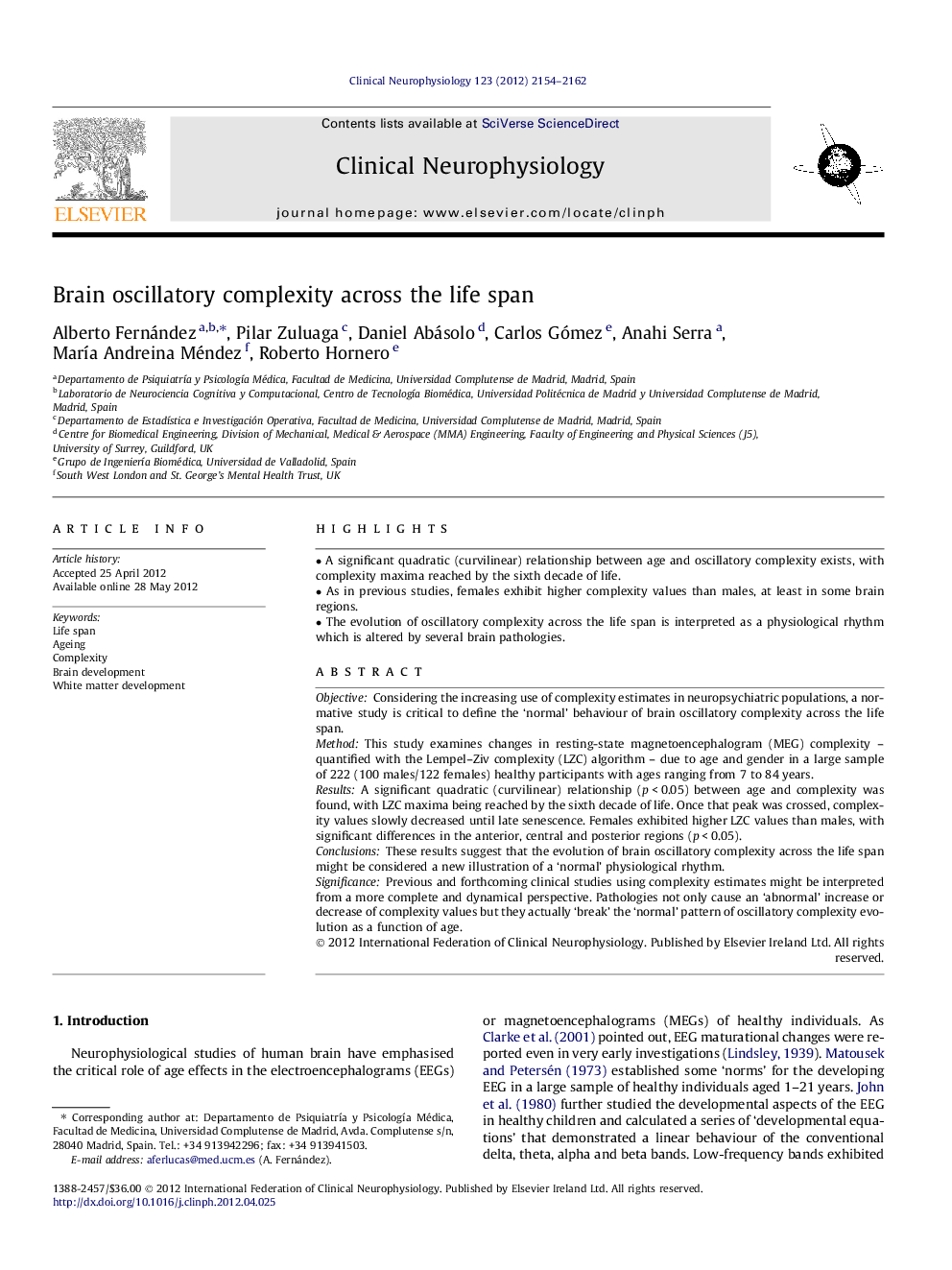| Article ID | Journal | Published Year | Pages | File Type |
|---|---|---|---|---|
| 3043104 | Clinical Neurophysiology | 2012 | 9 Pages |
ObjectiveConsidering the increasing use of complexity estimates in neuropsychiatric populations, a normative study is critical to define the ‘normal’ behaviour of brain oscillatory complexity across the life span.MethodThis study examines changes in resting-state magnetoencephalogram (MEG) complexity – quantified with the Lempel–Ziv complexity (LZC) algorithm – due to age and gender in a large sample of 222 (100 males/122 females) healthy participants with ages ranging from 7 to 84 years.ResultsA significant quadratic (curvilinear) relationship (p < 0.05) between age and complexity was found, with LZC maxima being reached by the sixth decade of life. Once that peak was crossed, complexity values slowly decreased until late senescence. Females exhibited higher LZC values than males, with significant differences in the anterior, central and posterior regions (p < 0.05).ConclusionsThese results suggest that the evolution of brain oscillatory complexity across the life span might be considered a new illustration of a ‘normal’ physiological rhythm.SignificancePrevious and forthcoming clinical studies using complexity estimates might be interpreted from a more complete and dynamical perspective. Pathologies not only cause an ‘abnormal’ increase or decrease of complexity values but they actually ‘break’ the ‘normal’ pattern of oscillatory complexity evolution as a function of age.
► A significant quadratic (curvilinear) relationship between age and oscillatory complexity exists, with complexity maxima reached by the sixth decade of life. ► As in previous studies, females exhibit higher complexity values than males, at least in some brain regions. ► The evolution of oscillatory complexity across the life span is interpreted as a physiological rhythm which is altered by several brain pathologies.
